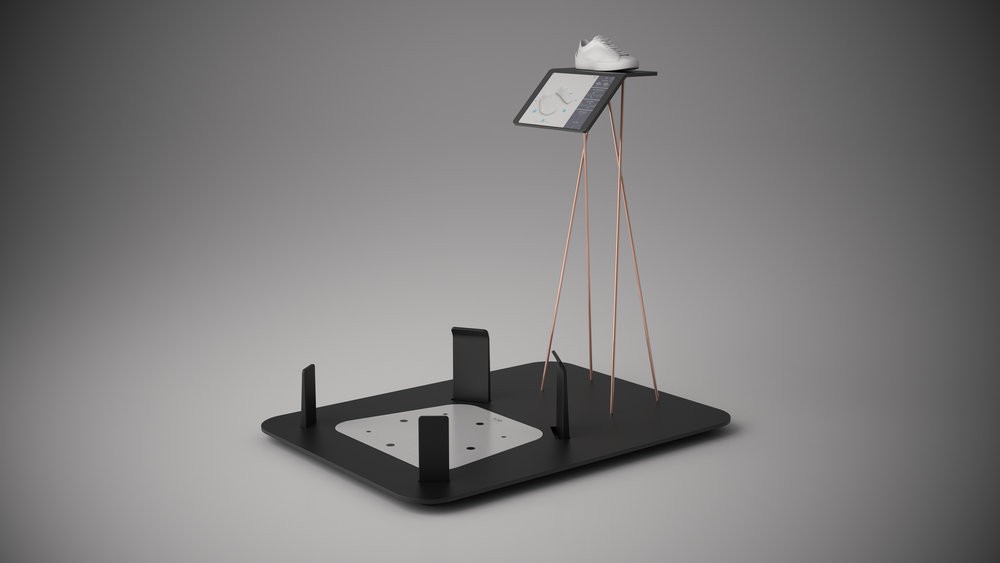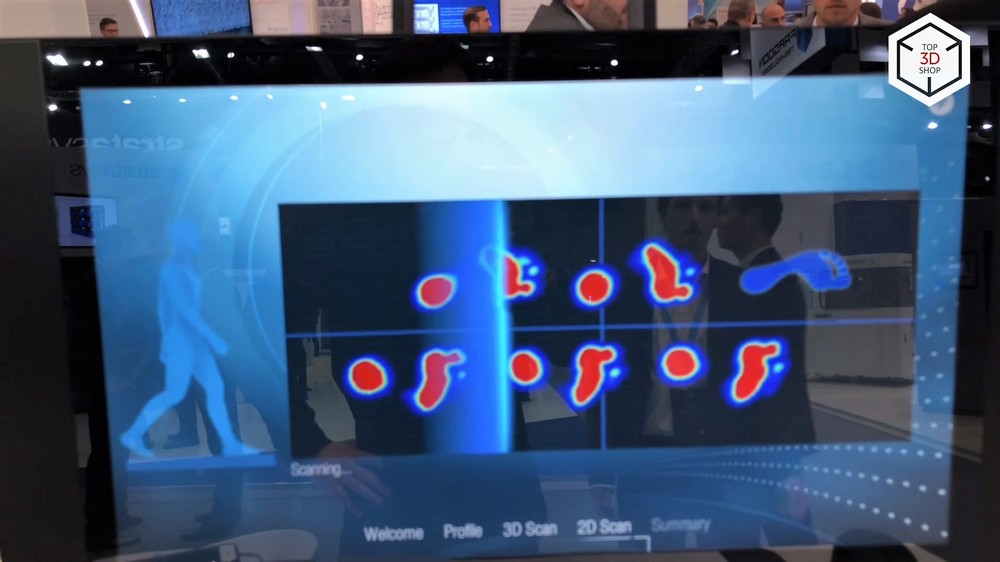Solutions for 3D printing of personal orthopedic insoles with Formnext 2017

At the exhibition Formnext 2017, we met with solutions for the manufacture of individual custom insoles using 3D scanning and printing. These technologies will help create sports and therapeutic shoes that are ideal for each customer, reduce fatigue with increased and prolonged loads on the legs, reduce the risk of flatfoot.
As it was done before
Scanning in the shoe business has long been no news, but earlier we saw examples of its use only in the selection of shoe size and for the initial diagnosis of flatfoot - it was difficult to expect more with a flat two-dimensional foot scan, albeit more convenient and accurate than taking measurements manually. in fact no more information than a footprint on paper.

Orthopedists use two-dimensional flat scans for sizing, and the insoles themselves continue to be made using traditional methods. This is done, for example, in the Ortek network of orthopedic salons.

Without a volume scan of the leg, as well as obtaining information about the dynamics of movement and the distribution of the load on the foot, the information about the legs is incomplete to provide the most individualized approach - after all, the output is at least the exact size, but without other individual features. Because of this, orthopedists have to resort to outdated methods, such as manual measurements, taking impressions and making forms. All this not only stretches in time, but also significantly increases the cost of the process.
Integrated solutions, which are described in this article, are designed to significantly speed up and cheapen the manufacture of insoles, as well as to remove the influence of the human factor on the accuracy of matching sizes.
3D printing was also used in the manufacture of footwear, but it was not about such deep personalization.

Formnext 2017 once again showed us that in this area additive technologies are applied the further, the more efficiently.
How it is done now
ECCO: Ecco Quant-U

The first solution presented is Ecco Quant-U. This is a complex for scanning the feet and printing insoles. How is the process itself, the employee told us Ecco.

Ecko uses the Volumental orthopedic scanner.

It can scan the fullness of the legs, like a regular 3D shoe scanner, and shows the dimensions of both feet, the height of the arch of the foot, the differences in the shape of the right and left feet.

This is what is already used in stores - visitors come from the street, scan their feet and the seller can immediately tell them which shoe models are suitable for them, which ones will sit on their legs, and immediately give them the right ones to try on.

Buyers usually know their size, and the seller can compare this size with the scan results. Ecco shoes are usually slightly larger than samples from other manufacturers of the same size.

Personalization of shoes occurs as follows: scan data and data obtained from the second source are used - these are special shoes with sensors that are given to the client and asked to walk. Sensors transmit gait information to the program: changing the position of the leg, changing pressure in different parts of the foot when walking.

A special algorithm correlates data from the scanner, gait sensor data and dimensions, and allows you to create a digital model.

Based on this model, a unique insole that is most suitable for each specific foot is printed.

This is not an ordinary insole, it is the inner layer that completes the creation of the shoe, and does not complement it.

Ekko produces a series of special shoes designed for use with such insoles.

This is a 3D printed silicone. Insoles are printed on special printers.
Who helped
The printing process is developed together with German RepRap. Their LAM printer best meets the requirements for printing silicone insoles.

Special silicone is developed for the project by Dow Chemical. This company uses additives in its materials to improve the mechanical properties of plastic - its elasticity, strength, durability. This experience came at the right time. The knowledge gained by the Swedish company Volumental, which has not been developing shoe 3D-scanners for several years already, was useful.
Manufacturers of electronics and software also took part.
How much is it
The estimated initial cost is 400 euros, but first it is necessary to produce a pilot batch of 50 orders to get user feedback. After all, all the reviews that we have now are received from Ecco employees, professional testers of footwear and biomechanics from the University of Santa Barbara.
Application
While this is a commodity for comfort. Comfortable sports shoes with such insoles become even more comfortable, they provide maximum support for a healthy foot.
If you need corrective shoes, it is better to contact an orthopedist, but if you are healthy and you need shoes to reduce stress and fatigue, this is the very option.
In the future, when the manufacturer will have partners from the medical industry, or a licensed medical company will acquire this solution and use it in its activities, the topic will be developed.
HP and Superfeet: FitStation

FitStation is a project of Superfeet and HP. This is a solution both for the selection of shoes from existing models, and for the creation of personal insoles for shoes.
How it's done
The idea is this: the consumer comes to a special kiosk, fills in the necessary data - such as gender, age, weight. Then the scanning process takes place.

For scanning, a specialized True Form 3D RSscan Tiger shoe 3D scanner is used , or rather, a HP Fitstation kit .

First, each leg is scanned alternately.

The client places the foot in the scanner where the three-dimensional image is taken.

This creates an accurate digital foot model, with its unique geometry and all sizes.

The next step is gait scanning: you must walk a few times on a special touch pad.

The result shows the dynamic distribution of the load when walking, how the foot moves, how the weight is distributed to different parts of the foot to achieve balance.

Next, the user needs to answer several questions of the program, including: the purpose of the order - whether it will be shoes for training or competitions, with what frequency and intensity shoes will be used, what problems are known when using other shoes - where it usually presses, where it rubs.
All this will be used by the program in order to offer the best solution.

Further, the data from the scanner and pressure gauge is processed and compared with the parameters of existing shoe models from the catalog. This allows you to select the most appropriate model, taking into account its geometry.

The catalog contains shoes from different manufacturers, the buyer has the freedom to choose.
Another possibility for the client is to send a unique project of insoles for 3D printing.
Just click on “buy” and enter your home address and bank card details - the order is sent to production, where it is printed on the HP Jet Fusion 3D printer from PA 12 material and sent directly to the buyer’s home.

Application
SafeSize ME3D software is responsible for modeling the insoles in the FitStation and selecting the shoes for individual parameters.
This software was developed with the expectation of most ordinary legs, primarily for working with sports shoes. The company is working on a separate application, among the possibilities of which will be a specialized orthopedic application.

How much is it
For other countries, prices have not yet been determined, and in the US, a pair of Superfeet insoles will cost the client about $ 150.
Total
Most likely, in the coming years, shoe 3D-technologies will be used as widely as possible, the cost of such services will decrease, geographical accessibility will grow and anyone will be able to use them. For now, the novelty described here is the last word of technology for the shoe and orthopedic industry.
By the way, you can always choose and order equipment for the provision of services for creating individual insoles through the managers of Top 3D Shop .
Want more interesting news from the world of 3D technology?
Subscribe to us in the social. networks:




All Articles